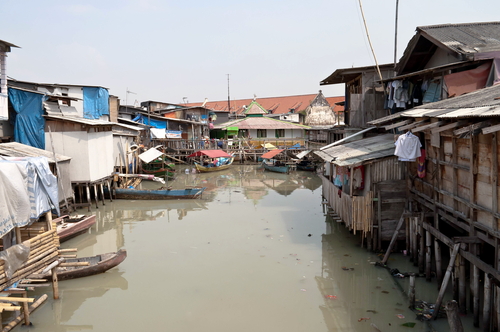Indonesia’s Poverty Reduction Strides During Decentralization were Offset by Rising Inequality

Please note that we are not authorised to provide any investment advice. The content on this page is for information purposes only.
How effective was Indonesia in addressing poverty and inequality in the decentralisation period?
In the first decade of the decentralisation period, from 2001–10, Indonesia’s GDP grew at an average annual rate of only 5.4 percent. This was significantly slower than during 1990–96, prior to the Asian financial crisis, when Indonesia’s GDP grew at an average rate of more than 7 percent per year.
How effective was Indonesia in addressing poverty and inequality in the decentralisation period?
In the first decade of the decentralisation period, from 2001–10, Indonesia’s GDP grew at an average annual rate of only 5.4 percent. This was significantly slower than during 1990–96, prior to the Asian financial crisis, when Indonesia’s GDP grew at an average rate of more than 7 percent per year.
But, according to Indonesia’s national household survey (SUSENAS), consumption growth increased by an average of only 2.4 percent per year between 2002–10 — lower than during the recovery period following the Asian financial crisis.
Slowing employment growth reflects a lower average growth rate. During the trade liberalisation of the mid-1980s to mid-1990s, the export-oriented manufacturing sector absorbed the abundant supply of low-skilled labour. But employment growth in manufacturing slowed across the decentralisation period. Average annual employment growth in the manufacturing sector averaged 1.5 percent from 2001–10, much lower than the 5.8 percent observed in the period leading up to the crisis.
On the other hand, the national poverty rate showed a decreasing trend between 2001 and 2005. But the poverty rate increased in 2006, partly because of the reduction in fuel subsidies in 2005 in conjunction with increases in the price of rice and other commodities. Despite still decreasing, the poverty reduction rate has also slowed to an average of 3.7 percent per year from 2002-10, compared to the 5 percent annual decrease Indonesia achieved from 1990–96. In 2010, the poverty rate was 13.3 percent.
But while poverty rates decreased, consumption inequality increased. Calculating inequality using household consumption data, the Gini coefficient increased by 1.9 percent per year between 2002 and 2010, with a sharp increase in 2009. Current data shows the Gini coefficient has been stable at a high rate of 0.41 since 2011. The Gini coefficient also increased in all provinces in Indonesia during 2002–10.
Can Indonesia’s slower growth during the decentralisation period still be considered ‘pro-poor’?
Since 2002, the estimate of the growth elasticity of poverty, or the impact of consumption growth on poverty, is to have been –2.46. This means that a 10 percent increase in average consumption per capita would have reduced the poverty rate by almost 25 percent. Since 2002, an increase in average living standards, in terms of consumption per capita, helped to reduce poverty.
In contrast, the impact of inequality on poverty was positive, and significant, at 1.13. This suggests that a 10 percent increase in inequality would have increased the poverty rate by more than 11 percent.
Using mean consumption per capita as a proxy for economic growth, calculations show that growth helped reduce the poverty rate by around 5.7 percentage points. But the rising Gini coefficient offset this reduction in the poverty rate by 1.4–1.9 percentage points. So, although economic growth was still pro-poor during the decentralisation period, increasing inequality reduced the positive impact of growth. Inequality has negated the positive impacts of consumption growth for the poor by between one-quarter to one-third.
More research will help determine what caused rising inequality in the decentralisation period. But the fact that increases in inequality countered the positive impact of growth for Indonesia’s poor has some important policy implications. Indonesia needs to focus not just on poverty alleviation, but on specific policies that combat inequality and poverty together. Indonesia must prioritise not only improving the welfare of the poor, but also redistributing the wealth of its richest people through progressive tax reforms.
Rising inequality hampers poverty alleviation in Indonesia is republished with permission from East Asia Forum




